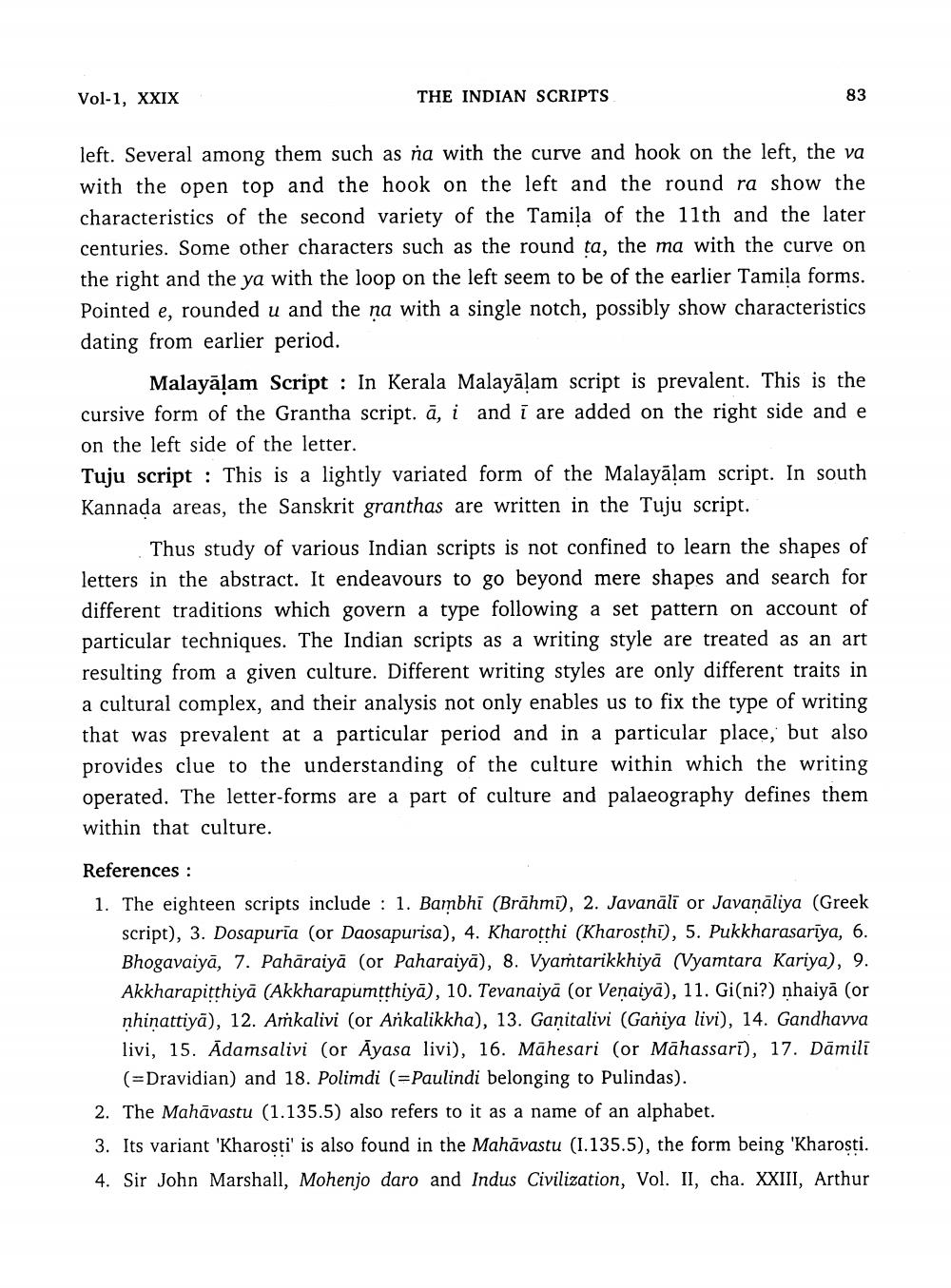________________
Vol-1, XXIX
THE INDIAN SCRIPTS
left. Several among them such as na with the curve and hook on the left, the va with the open top and the hook on the left and the round ra show the characteristics of the second variety of the Tamila of the 11th and the later centuries. Some other characters such as the round ta, the ma with the curve on the right and the ya with the loop on the left seem to be of the earlier Tamila forms. Pointed e, rounded u and the na with a single notch, possibly show characteristics dating from earlier period.
Malayāļam Script : In Kerala Malayālam script is prevalent. This is the cursive form of the Grantha script. ā, i and i are added on the right side and e on the left side of the letter. Tuju script : This is a lightly variated form of the Malayālam script. In south Kannada areas, the Sanskrit granthas are written in the Tuju script.
Thus study of various Indian scripts is not confined to learn the shapes of letters in the abstract. It endeavours to go beyond mere shapes and search for different traditions which govern a type following a set pattern on account of particular techniques. The Indian scripts as a writing style are treated as an art resulting from a given culture. Different writing styles are only different traits in a cultural complex, and their analysis not only enables us to fix the type of writing that was prevalent at a particular period and in a particular place, but also provides clue to the understanding of the culture within which the writing operated. The letter-forms are a part of culture and palaeography defines them within that culture.
References : 1. The eighteen scripts include : 1. Bambhi (Brāhmi), 2. Javanāli or Javanāliya (Greek
script), 3. Dosapuria (or Daosapurisa), 4. Kharotthi (Kharosthi), 5. Pukkharasarīya, 6. Bhogavaiyā, 7. Pahāraiyā (or Paharaiyā), 8. Vyamtarikkhiyā (Vyamtara Kariya), 9. Akkharapitthiyā (Akkharapumtthiya), 10. Tevanaiya (or Venaiya), 11. Gi(ni?) nhaiyā (or nhiņattiyā), 12. Aïkalivi (or Ařkalikkha), 13. Ganitalivi (Ganiya livi), 14. Gandhavva livi, 15. Adamsalivi (or Āyasa livi), 16. Māhesari (or Māhassarī), 17. Dāmili
(=Dravidian) and 18. Polimdi (=Paulindi belonging to Pulindas). 2. The Mahāvastu (1.135.5) also refers to it as a name of an alphabet. 3. Its variant 'Kharosti' is also found in the Mahāvastu (1.135.5), the form being 'Kharosti. 4. Sir John Marshall, Mohenjo daro and Indus Civilization, Vol. II, cha. XXIII, Arthur




